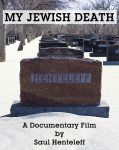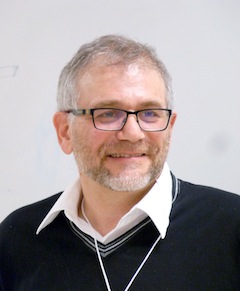When my father died in 2014, I was already familiar with the notion that mourning progresses in stages. These include denial, anger, grief, bargaining and, finally, acceptance, and they are widely recognized by the therapeutic professions.
Two years after my father died, however, I could make an argument for one more item in this neat list. This item is: paperwork. Paperwork that can take months or years to complete while other tasks are shelved, children get older and family relationships unravel.
And so it was that I didn’t really start grieving for my father until two years after his passing. This was the point at which I was finally able to look through my father’s archive. He had a wealth of his professional writing, as well as mementoes from his life in Israel – things I had never seen, never heard about, photos of people I didn’t recognize. Here, now, was another kind of loss: his memories, the languages he spoke, the cultural narrative of the Egyptian Jew who became the halutz (pioneer), the farmer and a soldier.
My grief was further complicated by my father himself: complex, secretive, angry, hard to fathom and even harder to love. But, as hard as it was to love him, it has been just as hard to let go of this contradictory, loving, gifted and extraordinary man, who spoke nonchalantly about his life being “nothing special,” while simultaneously and relentlessly craving recognition for his life’s work.
How was I to experience my grief, work through it in the tidy way suggested by the literature, without feeling like a hypocrite? Every time the sadness bubbled to the surface, another voice cried out, yes, but…. And yet, and yet, and yet.
My father loved trees. He loved the smell of them in Egypt. He loved planting them in Israel, shortly after its independence. After immigrating to England, he started a conservation charity to encourage children to do the same. He spoke fondly of his favorite plants, naming them with relish, acer palmatum, acacia, copper beech, pyracantha, weeping willow, honeysuckle. He talked about them the way other people talk about their friends, and his belongings reflected this after his death. One of his books was called Meetings with Remarkable Trees. It suited him. His meetings with remarkable trees had started when he was still a youngster.
It was also appropriate because, as straightforward as his relationship was with trees, his relationships with other people were confusing and painful. He was seldom content, often angry, and his brain was constantly besieged by business ideas, political observations and diatribes about the state of world affairs. I never saw him make a new friend. He called nobody from his old life and nobody called him. A staunch Zionist, he regarded orthodoxy with disdain. He refused to join the Jewish community and kept us apart from it, too.
But, when he was nurturing his plants, he was in touch with something sacred; this was his worship, his peace and his prayer. He could stand perfectly still, just watching the arc of the water landing on the dry earth, listening to the birds and the wind in the willow tree, utterly alone and completely at peace.
At other times, I tried to look after him. I tried to be his caregiver, his protector. So, with him gone, I felt myself to be – even with a multitude of other responsibilities – rather redundant.
By the spring of this year, I found an uncomplicated way that I could commune with my father: I nurtured my own garden. I thought of him as I watered, listening to the wind in the trees and watching the droplets creating rainbows. The water trickled down the spines of the squash leaves, pooling at the roots. I listened to the birds, felt the sun on my back, remembering the ice-cold glasses of water we’d enjoy together in the summer, the way he taught me to transplant trees, how I was always surprised by how much water he’d use. “Do you really need that much?” I’d ask.
He would collect seeds with a strange sort of compulsion, from public gardens, with no particular method – he would never store them properly or label them but there they were, stuffed in the bottoms of his pockets. Like me, now, collecting foxglove, chive, kale and garlic seeds for next year. Always thinking of the next harvest, another step toward self-sufficiency. “We made the desert bloom. We grew watermelons there.”
When I went to visit my mother this summer, I noticed that her own honeysuckle plant was growing wildly out of control. It had become so heavy that the lattice was falling off the wall of the house and it was beginning to encroach on other plants. The flowers were beautiful and the aroma intoxicating but, according to my mother, the vine was basically a weed. I offered to prune it back for her and was startled when she showed me how much could come off. Like a cautious hairdresser, I asked her, “Are you quite sure?” And she was. Besides, she told me, it would grow back in no time.
As I started to cut the branches, I realized that a good part of this monster was already dead. The branches overhead broke apart in my hands, dropping dry leaves in my hair. It was more than 30 degrees outside and, with older tools and a ladder pitching on the gravel, it was slow-going. I tried to avoid cutting live stems but soon grew too tired for mercy. I hacked at the convoluted, weedy vine and snapped the brittle trunk as perspiration ran into my eyes. As I did so, it occurred to me that something about the honeysuckle felt very familiar. In short, this tangled, complicated plant was very much like my father – extravagantly beautiful, complicated and with no respect for boundaries. One might almost say, parasitic.
And then I noticed what looked like a bundle of dry leaves tucked in the back. On closer inspection, I realized that it was an abandoned bird’s nest, carefully woven from the tiniest twigs with only the smallest space left to hold a few eggs. Right in the middle of that tangled mass of dead foliage, there was a sanctuary. Like our relationship – painful and nearly impossible to navigate but, at its heart, like that nest, there was something to treasure.
In the end, grief is not so much affixed to the image of the parent we have lost, or even the relationship we had. We are not grieving the relationship we could have had, either: we are acknowledging the gifts they did pass on.
My father, teaching me to cut and paste magazines; to write business letters with punchy opening lines; to edit my work, to edit it mercilessly until it was taut like a tightrope, without a single unnecessary word. Sure, he was a merciless critic, but this quality has served me well. Even as I revisit each sentence of this essay, it is an act of memory, a gesture of thanks to my father that I am so particular, so careful with my words and so determined that they should fall in, militarily, if possible, with my meaning.
In the end, this is how we find grace in grief when our relationship with the dead was challenging – toxic, even. We can choose how we remember, how we grieve and, ultimately, how we live, once our beloved relative is gone.
It is not simply an act of respect, this mourning. It is an act of gratitude, as we thank our lost ones for what they did give us, as we visit all of the unconditional love we can muster for that ancient connection, between parent and child.
Shula Klinger is an author, illustrator and journalist living in North Vancouver. Find out more at niftyscissors.com.



